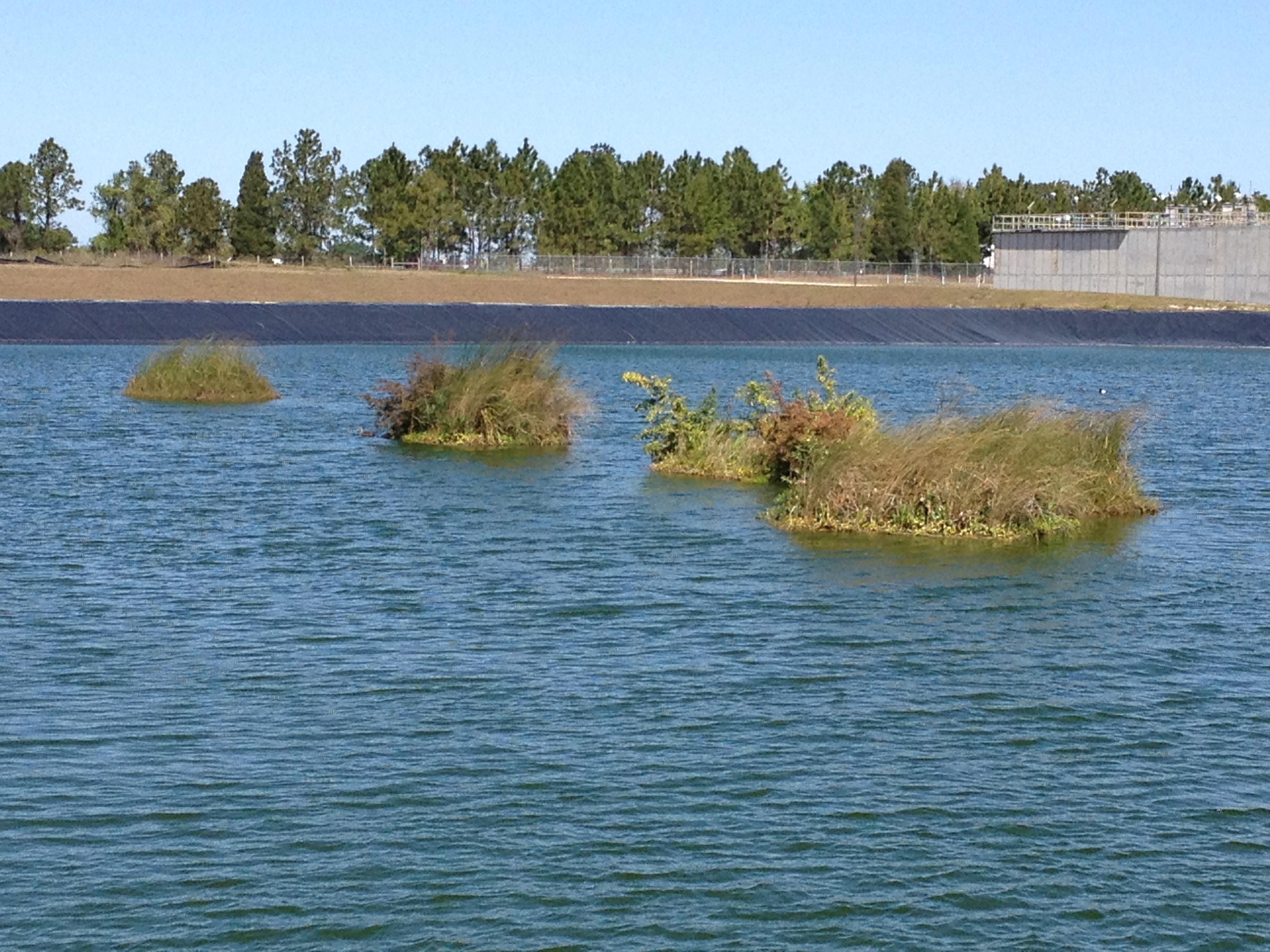Buy land, said Will Rogers in 1930. “They’re not making any more of it.”
That’s changing in Tampa Bay’s watershed, where counties and citizens are banding together to build new land – floating islands that help clean up pollution and protect water resources. As a side benefit, they even provide habitat for wildlife, including nesting birds where predators can’t reach their eggs.
Floating islands, also known as floating treatment wetlands, can be as sophisticated as those purchased through major international corporations or as simple as corrugated plastic pipes stuffed with pool noodles and tie-wrapped together. What they have in common is an interior surface that holds wetland plants above the waterline while allowing their roots to grow into a pond or reservoir. These floating islands can be a simple addition to existing stormwater ponds, improving water quality without requiring extensive engineering or land disturbance.

Recent Pasco study
While dozens of studies have been completed around the world, one of the most recent just wrapped up in Pasco County. With zero discharges allowed from the county’s wastewater plants, reducing nitrogen in reservoirs is an important challenge for the county.
“Reclaimed water is a valuable asset and a finite resource, but we’re also looking at innovative ways to use it,” said Jeffrey Harris, environmental biologist for Pasco County Utilities Engineering and a co-author of the report published in Water Science Technology.
The pilot study conducted in a lined basin indicates that floating islands enhanced nitrogen removal capacity by more than 50%. Most of the loss was through denitrification – in which microbes broke down nitrogen rather than plants collecting it.
Maintenance is minimal
From a long-term maintenance perspective, that means that the floating islands require almost no maintenance at this site, Harris adds. “You don’t have to harvest the biomass because most of the nitrogen removal occurs in the root zone.”
That’s a significant difference from places like South Florida where cattails are planted to collect nutrients – and then need to be harvested to prevent recycling nutrients back into the system when the plant dies. “We may go in occasionally to clean out the weeds, but other than that, we don’t expect to maintain the islands,” Harris said.
Citizens lead the charge
While the Pasco study used commercially available floating islands from Martin Ecosystems, different groups in Hillsborough have created their own using PVC pipes or even inexpensive corrugated pipe to keep the island stable. A Hillsborough County YouTube video shows both types of construction done by residents as part of the Adopt-A-Pond program.
Don Hardy, a resident of Logan Gate Village in Tampa, built floating islands from PVC. “There just aren’t enough natural wetlands left to deal with all the rainwater from our roofs,” he said. “Plants provide filtration for water, and these can be manufactured for about $99 a square foot for a 4-by-8-foot island with plastic lattice in the bottom.”
A $5,500 grant from the Environmental Protection Commission of Hillsborough County allowed Hardy to build more than 20 islands that also serve as habitat in the middle of the stormwater pond. “You’ll see turtles in the shade, nesting ducks because there are no predators, and minnows that attract big fish. It’s all part of the circle of life.”
Pretty in Pinellas

While Pinellas has put less official focus on floating islands, homeowners associations are building their own islands to improve water quality, attract wildlife and add aesthetic features to stormwater ponds, notes Julie Vogel, a manager of the county’s Adopt-A-Pond program who completed a master’s thesis on floating islands made of natural materials.
“They’re not a magic bullet in terms of water quality but beauty is in the eye of the beholder – and floating islands planted with vegetation that attracts birds and bees – like pickerel weed, yellow canna and blue flag iris – are definitely pretty to look at,” she said.
Learn more about floating islands:
https://pubs.ext.vt.edu/BSE/BSE-76/BSE-76-PDF.pdf
http://stormwater.wef.org/2015/09/floating-treatment-wetlands-show-promise-pond-retrofit/
